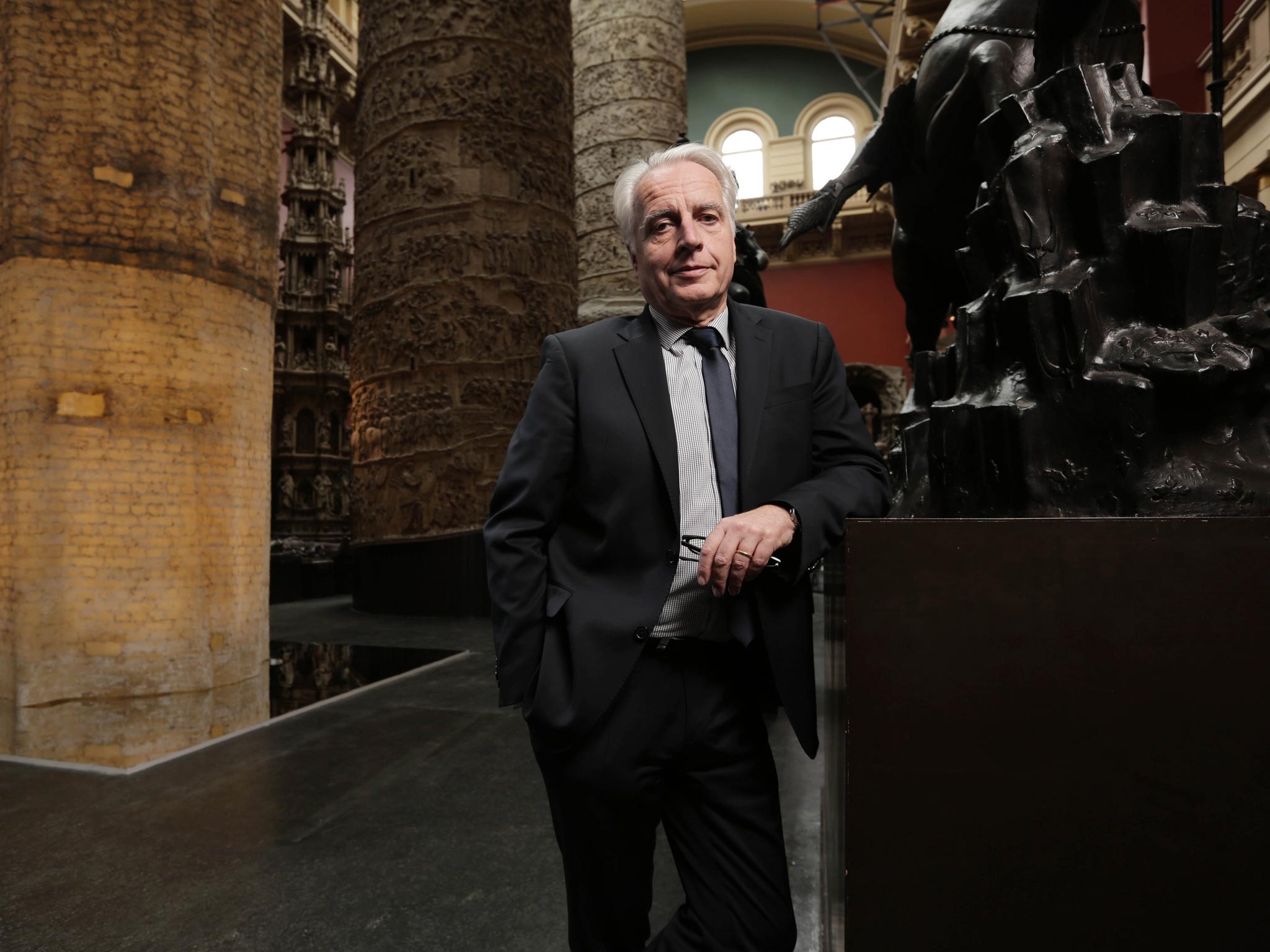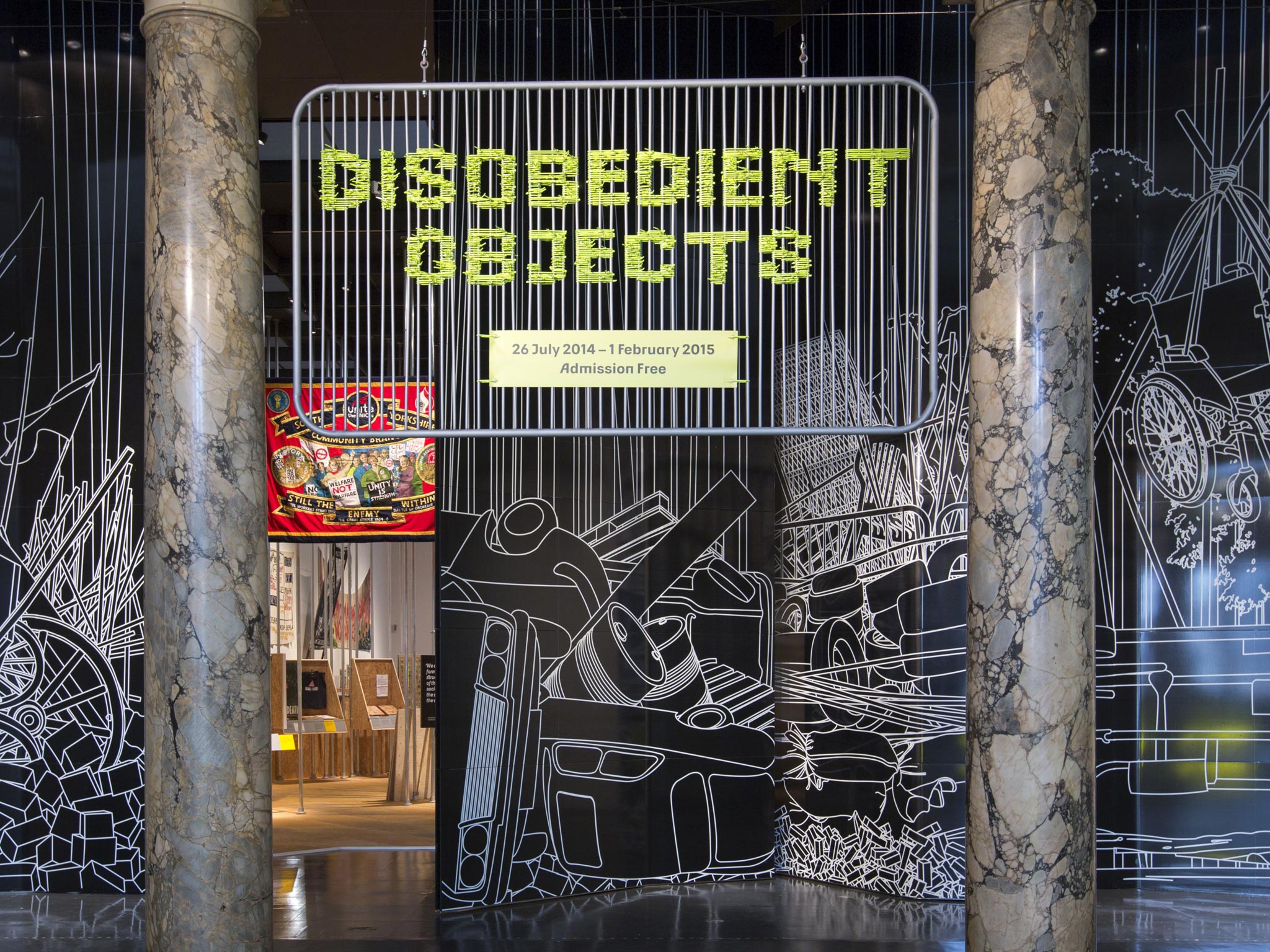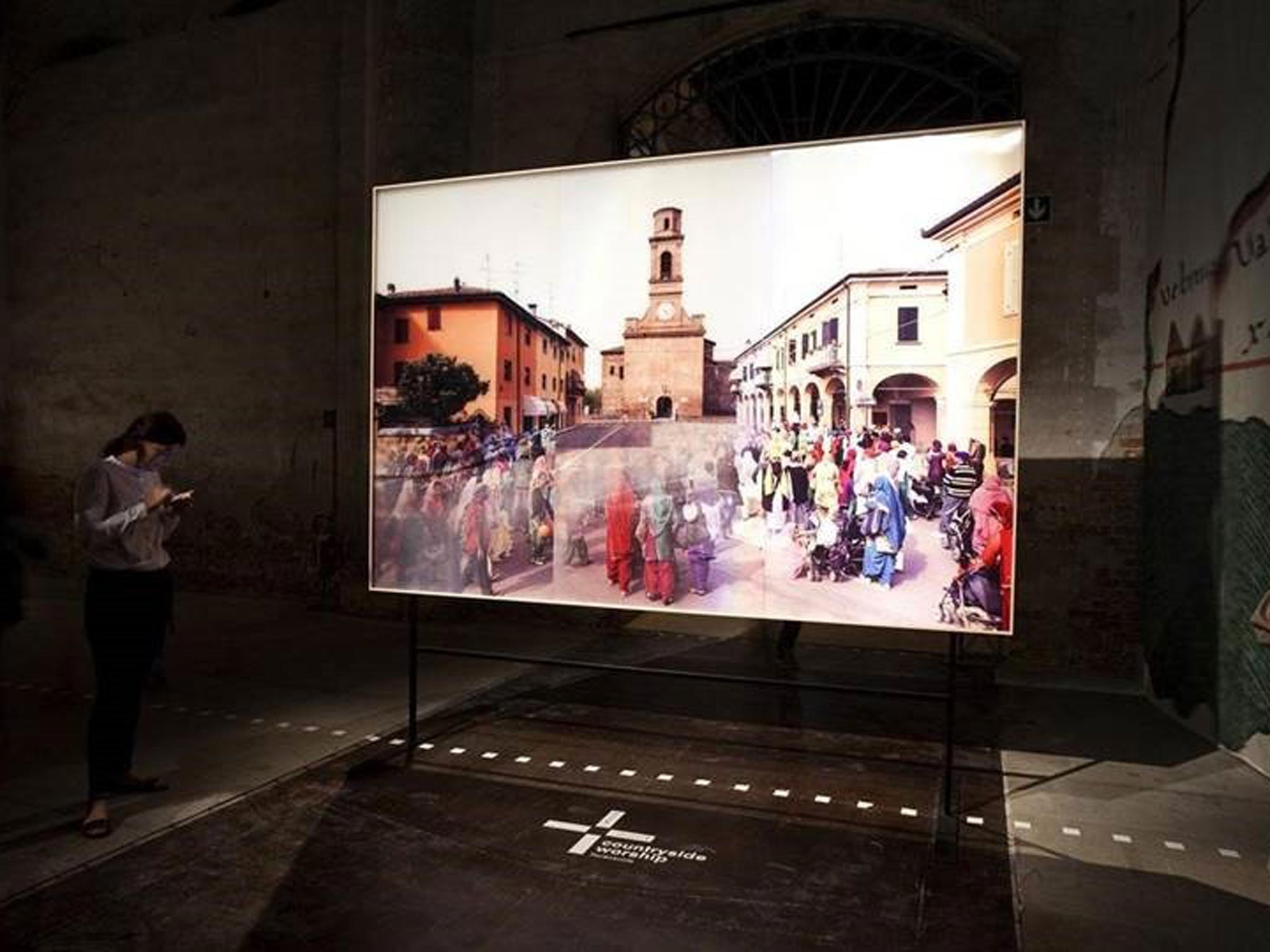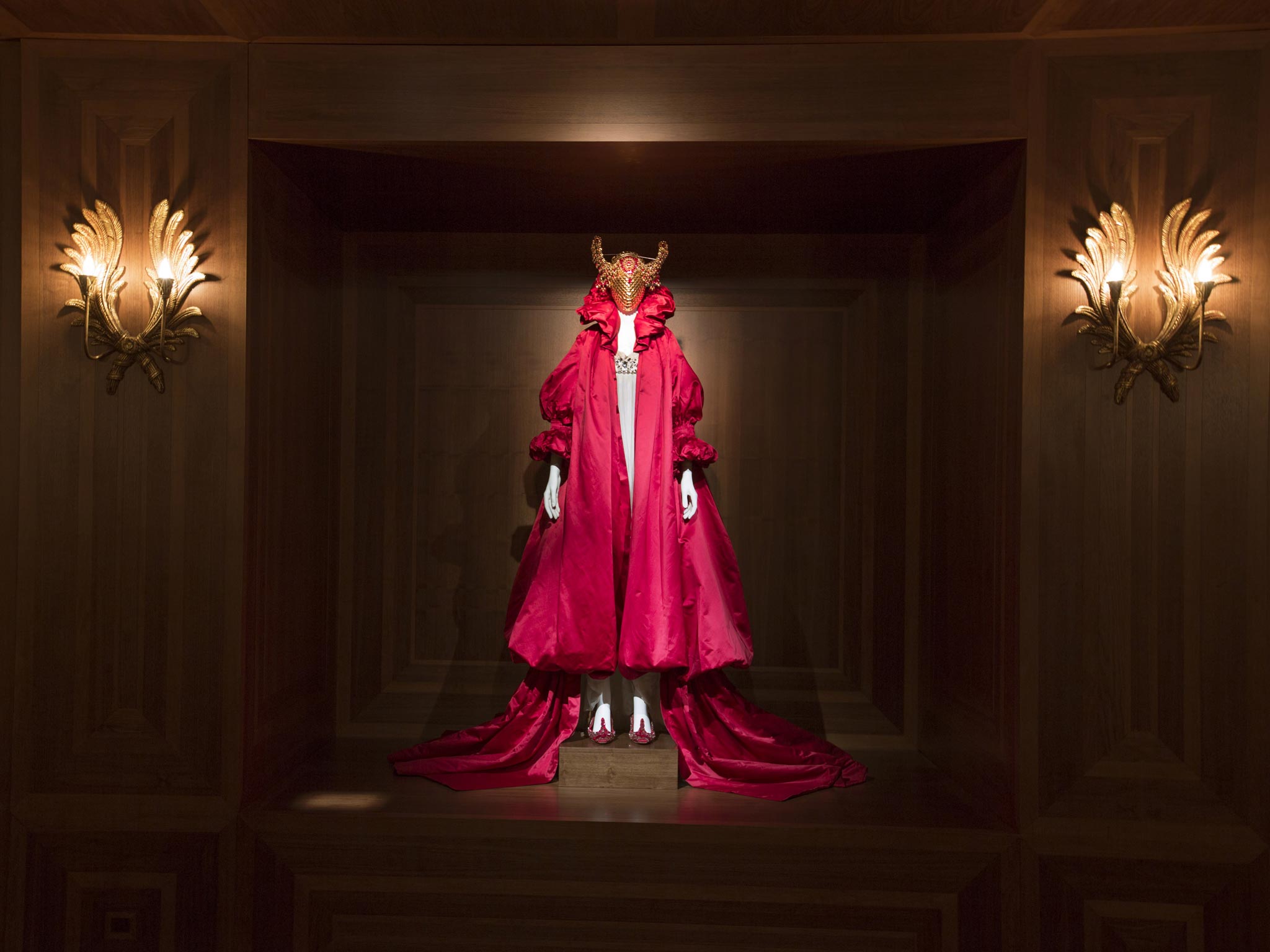All of This Belongs To You exhibition: The V&A is a hotbed of popular subversion
The design institution is questioning the very notion of what a museum is for

Your support helps us to tell the story
From reproductive rights to climate change to Big Tech, The Independent is on the ground when the story is developing. Whether it's investigating the financials of Elon Musk's pro-Trump PAC or producing our latest documentary, 'The A Word', which shines a light on the American women fighting for reproductive rights, we know how important it is to parse out the facts from the messaging.
At such a critical moment in US history, we need reporters on the ground. Your donation allows us to keep sending journalists to speak to both sides of the story.
The Independent is trusted by Americans across the entire political spectrum. And unlike many other quality news outlets, we choose not to lock Americans out of our reporting and analysis with paywalls. We believe quality journalism should be available to everyone, paid for by those who can afford it.
Your support makes all the difference.In which other museum in the world could you see a Bernini sculpture alongside a 3D printed gun? The V&A is nothing if not eclectic – and this grand old institution devoted to the “decorative arts and design” and perched in the Albertopolis, the cultural swathe cut through stuffy South Kensington by Queen Victoria’s beloved consort, is increasingly intent on shaking things up.
Take its Disobedient Objects show, which finished last month, a history of the tools of protest that placed union banners, homemade tear-gas masks and defaced bank notes from the Occupy movement in juxtaposition with the rood screens and Florentine sculptures on the other side of the entrance hall.
Or there’s the recently opened Rapid Response Collecting gallery, displaying modern, newsworthy items such as that 3D-printed gun and the iPhone 6. Both have shown the V&A questioning establishment notions of what a museum is for and what should be in it.
And now comes an exhibition explicitly devoted to that aim: All of This Belongs To You, described as a series of installations, commissions and events to “examine the role of public institutions in contemporary life” in the build-up to the May general election. The V&A has always been spectacular, but these days it’s subversive too.
The man steering it in this new direction is Martin Roth, the German-born director who previously led the Dresden State Art Collection. He’s hurriedly finishing a scone that has to make do for lunch when I catch up with him in his office, but he’s affable and relaxed nonetheless.

I ask him how he felt taking on the role in 2011. “The V&A’s a very challenging institution because it’s had a lot of success in the past 10 to 15 years … [but] I’m a fan of challenging things and being challenged,” he says. “I think we don’t have to follow the last 150 years entirely, we can have a different atmosphere in here.”
And that atmosphere has a political charge. These days, you’ve got more chance of winning the pools than hearing a politician talk about the arts in their hustings – but, from the title onwards, All of this Belongs to You implores each of us to recognise our own role in protecting our cultural legacy, whatever the attitude of Westminster.
By the same token, it’s clear that today’s V&A management take the museum’s own societal responsibilities very seriously. “We are part of the public realm – we’re public servants and the building is part of the civic infrastructure of the country. So, what kind of responsibilities does that give us at a time when conventional political debate is met with apathy – and when the priorities of education are being skewed towards future professional success rather than more profound, humanistic questions?” says Kieran Long, co-curator of All of This Belongs To You, senior curator of architecture, design and digital and one of Roth’s key signings.
All of This Belongs to You will address this issue head-on in lectures and talks, while installations will explore the institution’s capabilities and limitations. These include Australian artist Natalie Jeremijenko’s “moth cinema”, a habitat for insects on Exhibition Road that will question why museums exclude the natural world.

Meanwhile, the New York-based Jorge Otero-Pailos has taken a latex cast of the unseen inside of the V&A’s largest piece, a plaster cast of the Ancient Roman Trajan’s Column, that will show off the accumulated dirt and detritus to remind us of the museum’s duty of care. And muf architecture will mull on the idea of “public space” by putting on events and installing furniture in the Medieval and Renaissance galleries.
“The V&A is a rich and idealised public space that keeps out some aspects of the everyday,” explains muf’s Liza Fior by way of explaining her planned visitor-friendly “adjustments”. Who knows whether this exhibition’s innovations may pave the way for more permanent transformations in the future?
In its drive to engage, the V&A under Roth has also been developing itself as a brand beyond its affluent west London enclave. It has always sent exhibitions and objects on loan to other countries, but now it is creating permanent outposts: in 2018, the V&A Dundee will open (all being well financially: a Kengu Kuma design being built in co-operation with Dundee’s city council has already bust the budget), while collaboration with China to build a state-of-the-art design museum in the city of Shenzhen is in the works. “I used to be a fan of travelling exhibitions.
But I think we need new ways of working together in this globalised world. [The China project] is not the V&A parachuting ideas in there. It’s a Chinese-ish working group. It’s a five-year contract, we will see if it works,” says Roth. “They will have their own life and develop new things … and if this works we will try similar things in other parts of the world.”
Closer to home, the V&A will open a branch at the Olympic Park in Stratford in the next 10 years, to include the UK’s first gallery space dedicated to digital art. Is it tougher for museums in this digital, consumer-led world, I wonder? Are physical objects losing their currency? “It’s exactly the opposite,” says Roth, picking up his phone. “We have a lot of knowledge in these devices, but people then want to see the reality behind it. You want the real thing.”
Back in South Ken’ there are also more traditional concerns: Amanda Levete is completing a new entrance on Exhibition Road which aims to make the V&A face, rather than back off from, the Natural Brit-History and Science Museums, and the new Europe 1600-1800 Galleries – supposed to open this spring but delayed by the discovery of asbestos – will also please those who want to enjoy old objects.

Meanwhile, when we meet, Roth is marvelling over the advance sales for Alexander McQueen retrospective Savage Beauty, which is set to pack them in like David Bowie Is before it. “I remember when it was kind of dark and quiet. Now we have some people complaining about how many visitors we have!”
Certainly, Roth knows how to please the crowds, as well as challenge them: visitor numbers have increased over his tenure, from 2,629,065 to 3,180,450 in 2014. What, then, does he feel has still to achieve? Making it yet more of-the-moment, he says: he wants both “more young people working at the museum” and to “create a platform for new young talent, for fresh ideas, challenging ideas .…But ‘new’ talents is not enough. It has to be meaningful.”
To stroll through the V&A’s galleries today is already to be overwhelmed by meaning, however. The spaces go from grand Victoriana to classical bombast. The garden square, with its mural of Victoria staring down at you, feels like an oasis. You can have a bit of Rodin or an Erno Goldfinger model for his cinema at the Elephant & Castle. Wildly different pieces of art and design like this are given equal weight. Which is, in itself, perhaps as political a gesture as you can get in the world of museums.
The V&A is picky but not elitist. “It’s part of the V&A’s narrative, its history. From the beginning, from 1851 – this is not a classic royal collection. This is not a private collection. This is meant for the society, for the entire society. That’s the basic idea.”
‘All of This Belongs to You’ runs from Wednesday until 19 July across the V&A. Entry is free
Join our commenting forum
Join thought-provoking conversations, follow other Independent readers and see their replies
Comments